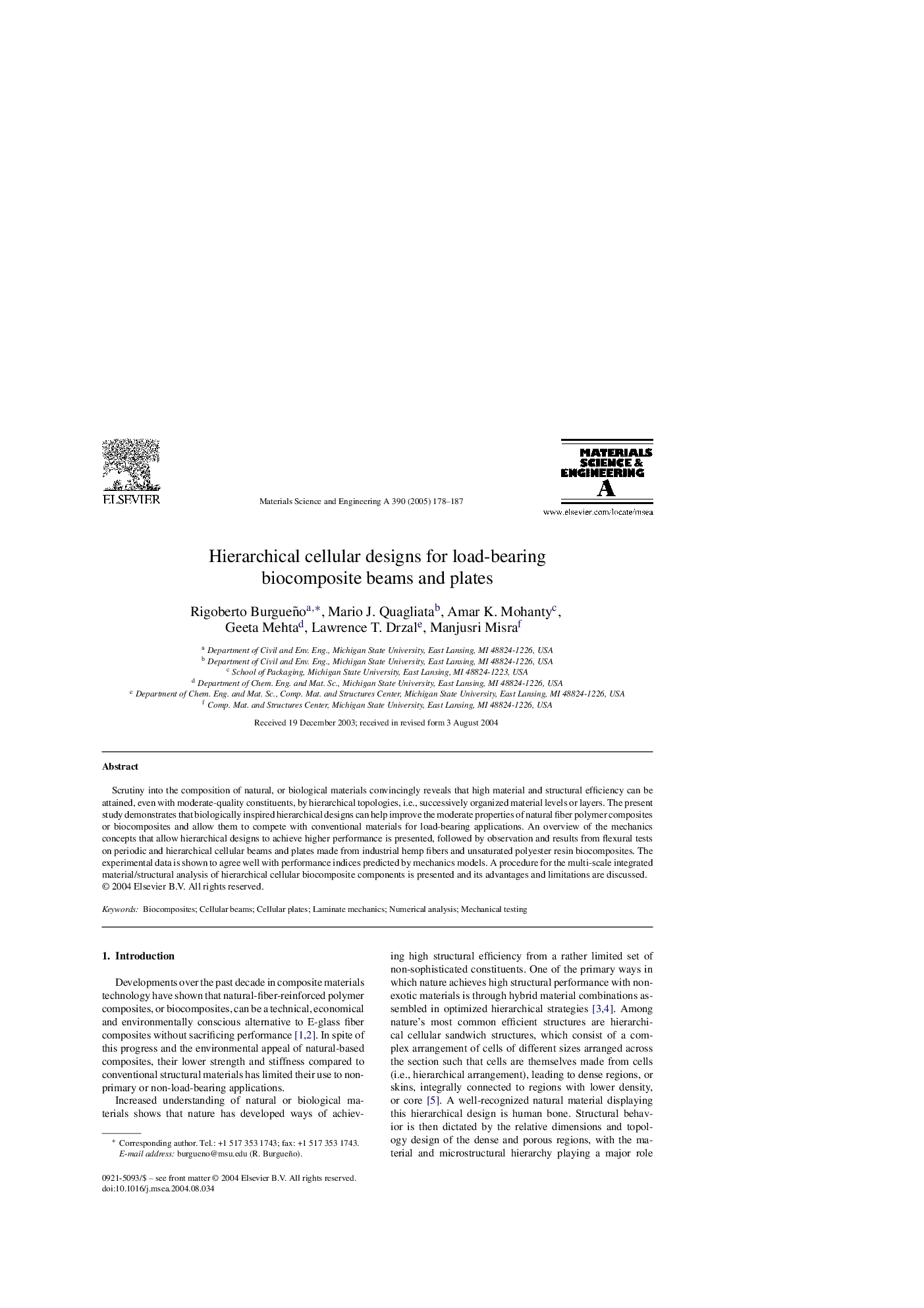| Article ID | Journal | Published Year | Pages | File Type |
|---|---|---|---|---|
| 9796669 | Materials Science and Engineering: A | 2005 | 10 Pages |
Abstract
Scrutiny into the composition of natural, or biological materials convincingly reveals that high material and structural efficiency can be attained, even with moderate-quality constituents, by hierarchical topologies, i.e., successively organized material levels or layers. The present study demonstrates that biologically inspired hierarchical designs can help improve the moderate properties of natural fiber polymer composites or biocomposites and allow them to compete with conventional materials for load-bearing applications. An overview of the mechanics concepts that allow hierarchical designs to achieve higher performance is presented, followed by observation and results from flexural tests on periodic and hierarchical cellular beams and plates made from industrial hemp fibers and unsaturated polyester resin biocomposites. The experimental data is shown to agree well with performance indices predicted by mechanics models. A procedure for the multi-scale integrated material/structural analysis of hierarchical cellular biocomposite components is presented and its advantages and limitations are discussed.
Related Topics
Physical Sciences and Engineering
Materials Science
Materials Science (General)
Authors
Rigoberto Burgueño, Mario J. Quagliata, Amar K. Mohanty, Geeta Mehta, Lawrence T. Drzal, Manjusri Misra,
